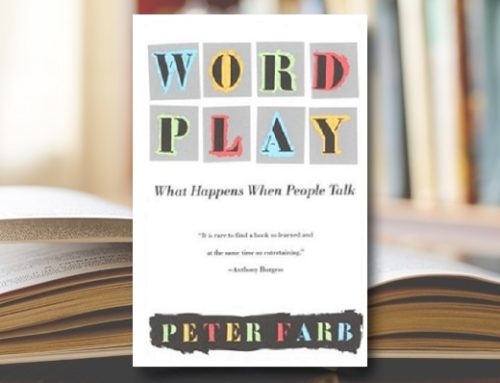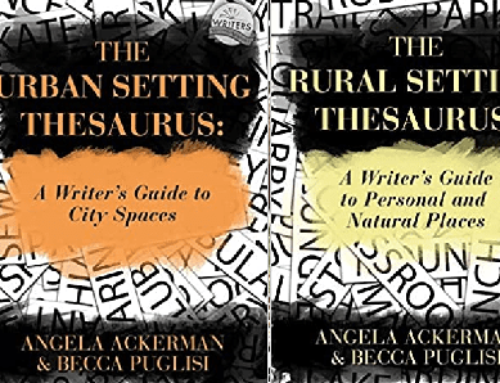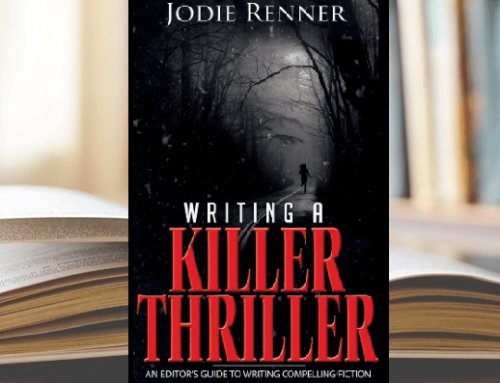There are tons of books on this subject out there, ranging from “meh!” to “wow.” Because you’re our peeps and we don’t want you to waste your time with the former, our staff has put together a shortlist of the latter. We’ve included links to make it easier for you to find these awesome resources, along with the staff member’s take on what’s most useful, informative, or inspiring about them, so you can go straight to the good stuff.
And the best part is that reading anything on this list qualifies as legitimate research, so when your friends and family ask why you’re on the sofa reading instead of sitting in front of the computer, you can tell them it’s all part of your long-term plan for fame and fortune.
Stein on Writing, by Sol Stein. More than any other writer we know, Sol Stein teaches the invaluable art of writing to satisfy the reader. He does it with wit and panache, so that the lessons go down easily and won’t be forgotten.
Wordplay: What Happens When People Talk, by Peter Farb. Not a book for writers, but it’s an enlightening study of language that’s a gold mine for dialogue-conscious novelists. (Read Ross’s full review here.)
Writing the Breakout Novel, by Donald Maass. There is a science to writing a hit novel, and this book delves into what makes a story “un-put-down-able.” Written by one of the industry’s most experienced literary agents (and author of 17 novels), this book separates good writing from good storytelling, and illustrates why commercially successful stories may or may not be well-written, but they are always well-told. I found it a valuable resource for writing tighter, more readable prose. This book is also very useful for comfortable mid-list authors looking to jolt their writing to the next level.
On Writing Well, by William Zinsser. Mostly for nonfiction, but this a true classic full of great advice.
Robert McKee’s Story, a book version of his famous seminars, is aimed specifically at screenwriting but has a terrific amount of very specific and useful information applicable to any storytelling medium. It concentrates on structure and character rather than on the niceties of writing.
The Reader Over Your Shoulder, by Robert Graves and Alan Hodge. Reminiscent of Strunk and White but with much more information.
Three books that are far from how-to but have plenty of food for thought: Milan Kundera’s The Art of the Novel and The Curtain, and James Wood’s How Fiction Works.
For those never-ending questions about the conventions of punctuation, italics/quotes, plurals/possessives, citations, and so on, every writer needs something like the cheap, unassuming, and well-indexed Merriam-Webster’s Guide to Punctuation and Style. Yes, there’s always the Chicago Manual of Style, but it’s far more detailed than most writers will ever need.
The Foundations of Screenwriting by Syd Field – it’s about screenwriting, but the principles of great storytelling rise above medium, and this book is one of the best in terms of breaking down a seemingly overwhelming venture into a very accessible process. 99%+ of stories follow the exact same structure, so it’s essential for every fiction writer to know it through and through.
The First Five Pages: A Writer’s Guide to Staying Out of the Rejection Pile, by Noah Lukeman. Lukeman is a literary agent who takes a pragmatic approach to the craft of writing, helping writers identify and fix the common mistakes that sink a book before it even starts. “There are no rules to ensure great writing,” he says, “but there are ways to avoid bad writing.” And he points them out in straightforward, tough love prose that also opens a window or two on the business of book publishing.
Self-Editing for Fiction Writers, by Renni Browne and Dave King. An easy-to-follow, fun-to-read guide on how to fix some of the most common manuscript problems. If you’re an aspiring writer who’s never read a book on craft before, this book is a great place to start.
Make Your Story a Movie: Adapting Your Book or Idea for Hollywood, by John Robert Marlow. Because there’s nothing else like it; the films of the authors, screenwriters, producers and directors quoted in the book have made over $50 billion. There’s no better source of real-world advice on what it takes to get a story on the screen. (Not that I’m biased.)
On Writing, by Stephen King. You won’t find a simpler explanation of the writer’s toolbox than Stephen King’s On Writing, not to mention it’s a great peek into the writing process of one of the most successful authors of our times. And really, how could I not recommend a book whose best piece of advice is to read more books?
How Not to Write a Novel: 200 Classic Mistakes and How to Avoid them – A Mis-Step by Mis-Step Guide, by Howard Mittelmark and Sandra Newman. If you’re like us, you often learn better with a bit of mockery. This book will make you laugh ruefully as you recognize your foibles, but it’ll also help you remember what NOT to do. For example, “When there is a plan, things cannot go according to it.”
Wired for Story: The Writer’s Guide to Using Brain Science to Hook Readers from the Very First Sentence, by Lisa Cron. Peter Gelfan told me about this book, but I’m taking credit because I love it. Rather than simply telling you what you should do to engage readers, which involves a great deal of trust that the person giving you the advice knows what they’re talking about, the author delves into the psychology and neuroscience behind reader expectations. So while Cron talks about all the usual subjects like showing vs telling and shifting POV, she also explains why those things are so critical, from an objectively scientific view. Fascinating in its own right, but also a fantastic exercise in craft (with exercises!).
The Scene Book: A Primer for the Fiction Writer, by Sandra Scofield. If you read this book while you’re working on writing a piece of fiction, you’ll dogear more pages than you don’t. Scofield’s pointers for bringing writing to life are the most practical, easy-to-grasp advice I’ve come across.
The Fiction Editor, the Novel, and the Novelist: A Book for Writers, Teachers, Publishers, and Anyone Else Devoted to Fiction, by Thomas McCormack. This one introduced me to the concept of a “master effect,” which, if you keep it at the front of your head as you’re writing, will make it pretty tough for you to lose your way. And it’s a pleasure — and reassuring — to hear McCormack dress down the idea of pursuing a “theme” in the writing of a work of fiction. He says theme forcibly thrusts on the student “a concept that is fuzzy, arbitrary, trivializing, irrelevant, distracting and ultimately deadening.” Thank God someone finally said it. Now if only word would get around.
The Sense of Style: The Thinking Person’s Guide to Writing in the 21st Century, by Steven Pinker. It’s easy to poke fun at terrible nonfiction writing. It’s harder to write good nonfiction, even when we have every intention of being clear and concise. Pinker explains why we produce bloated, confusing prose. He also shows us how to do better, describing the principles behind good writing instead of insisting upon arbitrary rules that apply to every situation.
The Elements of Style, by William Strunk and E.B. White. A letter its co-author, E. B. White, wrote me sums up why I encourage everyone to become familiar with this little book: “There are very few thoughts or concepts that can’t be put into plain English, provided anyone truly wants to do it. But for everyone who strives for clarity and simplicity there are three who prefer to draw the clouds across the sky–for one reason or another.”
If You Want to Write, by Brenda Euland. An inspiring, integrated take on life as a writer. When you’re sick of rules and need to remember what brought you to write in the first place, read this book.
Beginnings, Middles, and Ends, by Nancy Kress. Science fiction author Nancy Kress identifies what promises we make to our readers and how to keep them. Kress addresses questions like, what’s a through line? how can I structure my character’s arc? and how does one cure the act 2 blues? A must-read for the writer interested in story structure.
The Situation and the Story: The Art of Personal Narrative, by Vivian Gornick. While targeted at creative nonfiction writers, this text also applies to writers of fiction. Essayists and memoirists need to find the right persona for each piece, whereas the fiction writer must pinpoint the best narrative distance/s for a given story. Gornick shows how point of view, style, and voice coalesce in some great literary works.
The Art of Fiction, by John Gardner. An opinionated man, Gardner had some stark views on craft. Here you’ll find right and wrong, black and white. Yet the author frames his arguments with the opening caveat, “Whatever works is good.” Read this book to familiarize yourself with writing fundamentals. Read it to discover what your values are. Above all, read it critically. Gardner would expect nothing less.
While these books are all terrific resources to help you learn and refine your craft, there’s no substitute for professional feedback from a trained editor. Click here to learn more about our developmental editing and manuscript critique services.




